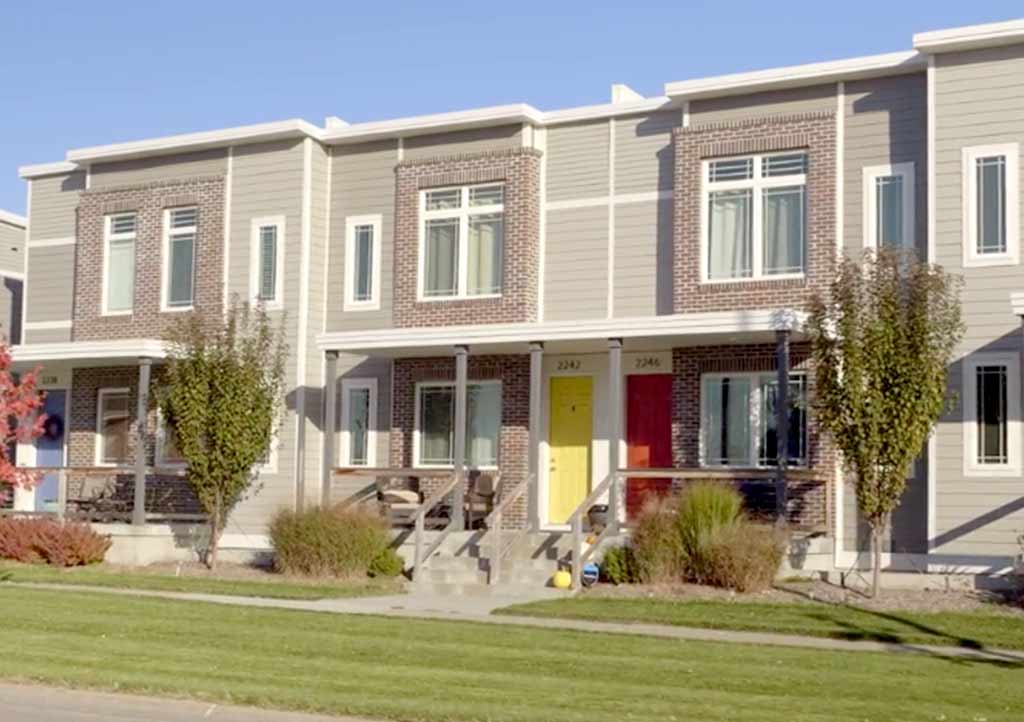One year after releasing its Affordable Housing Coordinated Action Plan, a detailed report of growth trends and market analysis that outlines the city’s housing needs over the next 10 years, Lincoln has seen tremendous achievements around its affordable housing efforts.
According to the report, Lincoln will need to add 17,000 living units to accommodate the city’s projected growth over the next 10 years. 5,000 of those units will need to be affordable to the lowest-income households. While Lincoln is constantly bustling with construction activity, the private market does not typically produce varied housing types. These issues require a solution that involves public and private collaboration, across a variety of industries and organizations.
Lincoln made several visible strides toward its affordable housing goals in 2021. One of the most visible achievements was Hoppe Development’s groundbreaking on Gatehouse Rows, a 98-unit affordable housing complex located on 36th and R Streets, west of Wyuka Cemetery. The complex will include a mix of one-, two-, and three-bedroom apartments. The development will also feature a playground, walking trail, and community space.
In January of this year, Hoppe Development filed plans for a second affordable housing project planned for Southwest Lincoln. Foxtail Meadows, a development planned for West Pioneers Boulevard and South Folsom Road, will include mixed-income living units, about a quarter of which will be designated for low-income residents.
Gatehouse Rows is unique in that it is the first large-scale development project since the release of the Coordinated Action Plan that is designed to be 100% affordable housing. The location of the development is also unique. Space within the city’s center is not easy to come by, especially for affordable housing. Ernesto Castillo, a Planner II for Lincoln’s Urban Development Department, explained why projects like Gatehouse Rows are vital to the growth of Lincoln.
“Finding land here in the built environment is not easy,” said Castillo. “Urban Development was able to find ground in the city center and put it to use meeting some of Lincoln’s affordable housing objectives.”
Affordable housing, as outlined by the Coordinated Action Plan, means the rental cost of a unit will not leave a family cost-burdened, which occurs when families spend more than 30% of their income on housing. Gatehouse Rows will be designated as affordable for people earning 60% of the area’s median income, and about 10% of units will be designated as affordable to people earning 40% of the area’s median income.
The City approved tax-incremental financing (TIF) amount of $2 million for public improvements related to Gatehouse Rows. These improvements include updating the area’s water lines, installing sidewalks, and paving sections of gravel road on 36th Street and Q Street, to accommodate the increase of traffic and utility usage in the neighborhood.
TIF financing is not the only financial support option for affordable housing. In another milestone for the city, Mayor Leirion Gaylor Baird and community partners announced the expansion of the financial institution Community Development Resources (CDR), to leverage millions of dollars for affordable housing resources. Among other things, this expansion will include adding affordable housing to CDR’s mission, the creation of a board of directors, and a commitment to raise $10 million in capital to be used for affordable housing development.
“We are meeting the needs of some of the citizens of Lincoln, providing quality affordable housing,” said Castillo. “And it can be done in such a way that the City establishes a good partnership with developers, architects, engineers and different city partners that review the processes.”

